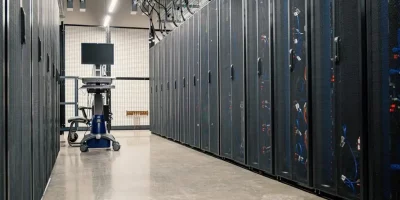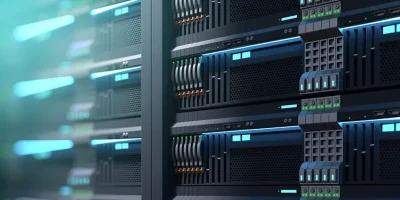Unplanned data center outages are all too common, far more than they should be. It should be no surprise that software failure contributes to many data center outages and downtimes, given the shift toward more virtual, network-based infrastructure during the last decade.
What happens if a data center goes down?
A power outage on the data center may be an IT specialist’s worst nightmare. It generally implies downtime, loss of revenue, extra expenditures, and a lot of stress and scrambling until the problem is fixed. The consequences of a data center’s power going out are significant.
To reduce these dangers, businesses are turning to a hybrid of providers and cloud services, allowing them to minimize the amount of their customer base that is affected if one data center goes down. Unfortunately, significant outages are not uncommon, and they frequently occur as a result of human error or severe weather.
The key is to assess facility resilience constantly; to install solutions that deliver real-time information about the data center environment and the likelihood of problems. It’s preferable to prevent a disaster than to recover from one.
However, no facility is entirely risk-free; better insight into how systems function, whether or not they can endure power outages or extreme weather conditions, and the constant monitoring of air conditioning, heating, and water might help reduce that risk. In addition, missing or failing assets might result in service outages and extra hardware expenditures, so it is critical to maintaining tabs on them.
What are the primary sources of failure in a data center?
The primary purpose of a data center should be to maintain availability for the mission-critical applications it houses. However, unplanned outages are possible, and data center operators must be proactive in devising strategies to prevent them. In addition, understanding the reasons for data center failures and finding methods to correct them is critical to avoiding company disruption, which may result in client abandonment and damaged reputation.
UPS system failure
Emerson regularly recommends monitoring UPS batteries’ ambient temperature and cell voltages to maintain track of their condition. In addition, when performing capacity testing, use correct battery maintenance techniques regularly.
Cybercrime
Because cybercrime has become the second most common cause of unplanned outages, security must be addressed at every level. Defending against attacks is only half of the battle. Datacenter operators should perform periodic system inspections and ensure their compliance certifications are up to date to benefit from improved resistance. They can also use DDoS security systems to defend against highly sophisticated assaults. Automating security management to make patch management easier and provide earlier detection of assaults may also assist in preventing unplanned outages due to cybercrime.
Human error
Regular and thorough training for data center staff should be a top priority. To reduce errors and ensure desired outcomes, you may also document method-of-process (MOP) techniques for carrying out complicated activities. Only qualified experts should monitor, maintain and manage the power and data center infrastructure to minimize downtime.
Weather
Natural catastrophes are unavoidable, but taking preventative precautions before something happens can help you avoid severe damage. Regularly test your disaster recovery plan and backup diesel generators.
Generators
Even though generator failures account for only 6% of faults, they are still essential to check and switch gears regularly. You must make use of N+1 redundancy and perform preventative maintenance.
Understanding the Cost of Data Center Downtime
Lost sales
Downtime directly impacts customers’ ability to make purchases, resulting in missed sales and potential revenue. In addition, the loss of network availability prevents consumers from interacting with the firm, which may have a detrimental impact on its operations.
Brand reputation
Customers will stop being customers if they have to deal with outages regularly that prevent them from quickly making purchases or utilizing a service.
Reduced productivity
Online interactions and services are essential to the operations of many organizations. Without access to internet services, employees’ productivity frequently comes to a halt as they lose the capacity to complete most of their tasks, production lines shut down, and other parts of the organization are affected.
Payouts
Some firms include language in their SLA uptime contracts that states how much money they are owed in unexpected downtime.
Lost data
Data is vulnerable to corruption, and new vulnerabilities may be created for cyberattacks that damage data during outages. Backups are frequently performed, but the blackout might cause consumers to be frightened and lose confidence in your company.
How often do data centers lose power?
Power outages were the most common reason for data center downtime in 2016, affecting 22 percent of 2N-architectured cooling failures and power systems. That’s one-third fewer outages than those who took the cheaper not-fully-redundant N+1 strategy, which had a 33 percent outage rate.
On the other hand, a power outage distribution can shut down an entire data center industry. In addition, outages are harmful to IT systems since they may lead to data loss, damaged files, and destroyed equipment.
How to Overcome Data Center Failures
The inability to access a server is an issue that affects all types of organizations and sizes, and the cost of server downtime may include days without system access or loss of critical business data. This might lead to difficulties in operation, service outages, and repair expenses.
Hardware, software, or data center facility failure may all be causes of equipment power failure tests. If you understand the causes of hardware failures, you may be able to prevent problems from happening in the first place and schedule downtime entirely, avoiding it. However, if a server failure occurs, it’s best to have a backup plan.
Final Thoughts: Always be prepared for an outage
Disasters can strike anytime, from power outages to extreme weather to cyberattacks. On the other hand, data centers are expected to be operational, regardless of the hazard. Therefore, businesses must have a well-planned disaster preparedness strategy in place in case of an emergency, which would allow them to return to work and do so fast.
Power outages have long been a worry for data center executives. Still, these events have become more frequent over the years – a trend that the uptime institute attributes to the growing number of organizations coping with hybrid IT’s complexities.






